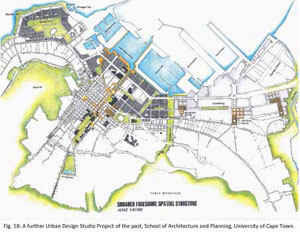

Historic cities of different regions of the world face a number of similar issues. In order to give them positive answers it is useful to make comparisons and share the experiences about conservation, revitalization and innovation made in different places. This presentation deals with a number of issues faced by Italian historic cities that are
somehow similar to Japanese Castle Towns. Among many possible examples we chose two cases that have some physical, economic and social resemblances with Kanazawa. They are the cities of Ferrara and Urbino. They are much smaller in size than Kanazawa (Ferrara has less than 150,000 inhabitants and Urbino 15,000) but their
history is similar and they face comparable economic and social issues. This will help to better understand the Italian approach to the conservation and revitalization of historic cities and evaluate whether some suggestions can be drawn for Japanese policies.

Prof. Paolo Ceccarelli : University of Ferarra, Italy
Urban planner. Chief of ILAUD (International Laboratory of Architecture and Urban Design) UNESCO Chair of Urban and Regional Planning for Sustainable Local Development.

Dr.Connie Etra Occhialini : University of Ferarra, Italy
Deputy director of ILAUD
1. Introduction of Seoul as a Castle City
2. What is the “Cheonggyecheon Approach”: “Becoming catalyst of downtown regeneration by Changing the out of place infra-structure of downtown to humane & continuous environment”
3. Cheonggyecheon Effect
1.Environmental Effects
2.New Urban Planning for Downtown
3.Cheonggyecheon Related Public Works
4. Conclusion: To make humane & sustainable environment, catalytic approach can be an important role in historic urban regeneration. Comprehensive Approach such as Geo-Eco-Urbanism is becoming more crucial

Prof. Yim, Chang Bok : Sungkyunkwan University, Suwon, South Korea
The idea of heritage is historically linked to what we call "old stones" in our old West countries. Today, intangible heritage is also considered to be preserved as a value that brings people together. Building the city on the city, or redesign historic city, requires consideration of the heritage in an enlarged
way to make it visible and alive. The recent history of our cities also teaches that the social dimension is also crucial. Maybe it is also something to do with heritage with a “big H” …

Prof. Nicolas Depoutot : Ecole nationale superieure d'architecture de Nancy, France
The Dutch East India Company1 established a settlement on the shores of Table Bay at the Cape in 1652: it wished to establish a refreshment station near the southernmost tip of Africa, as a halfway house for its fleets plying the Atlantic, Indian and other oceans between the Netherlands and its various outposts in the Far East. By the 1660’s a timber and earth fort constructed in the early years was replaced by a large, five-pointed stone Castle, which is still extant. This case-study paper describes the evolution of Cape Town as a castle town over the centuries and concludes with some observations about the historic city, livability, sustainability, continuity and resilience.


Prof. Fabio Todeschini : University of Cape town, South Africa
Suggestion of new approaches to urban visions and designs for Kanazawa not only considering old and new in a contradictive relationship, but also seeking to make them balanced and complementary.
1. Ecology and Morphology Restorations for a Sustainable Urban Region : -Issues related to “Re-assessing various values of water systems,” -“Re-defining usages of abandoned urban lands,”-“Eco-
integrated community restorations and designs,” (advanced case studies of rapid declines of populations)-“Integrated Approaches of Heritage Management and Urban Design with Sato-Yama, Sato-Umi Bio-Diversity Restorations”
2.Redefining Inner-Urban Settlements and Restructuring “City-Country Integrations”: -Holistic approaches for integrated land-uses, eco-systems, and human-settlements, -Environmental designs
for restoring natural ecologies for livable socio-cultural activities
3.Creating Mutual Heritage Management and Urban Design Approaches as a model program for the Eco-Cultural City in Future: -Re-combining citizens’ initiated innovative socio-cultural activities, educations, performances, and businesses with various historic and ecological communities, pubic/private gardens, long/short-range views, architectures, neighborhoods and places.

Prof. Takashi, ARIGA : Waseda University, Japan

Prof. Shigeru, SATOH : Waseda University, Japan
President of Architectural Institute of Japan(Until May, 2011)